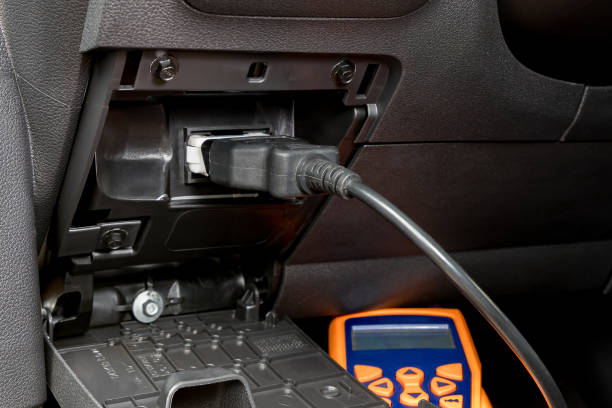
The last thing you want to see when you start up your vehicle or when you’re driving down the road is a check engine light. But for millions of people around the world that’s exactly what happens. In fact, if you drive a vehicle long enough it’s only a matter of time until you get a check engine light.
But when you get your heart out of your throat and figure out what the code means you’re only halfway there. That’s because you still need to know what the code means and how to fix it. So, what does a code P0401 mean, and how do you get it to go away?
We’ll break down everything you need to know here so you can get your vehicle back in tip-top shape.
What Does Code P0401 Mean?
OBD-II Trouble Code P0401 Description: Exhaust Gas Recirculation “A” Flow Insufficient Detected
Before you can dive too far into how to fix a code P0401 you need to know what it means. But while an “Exhaust gas recirculation “A” flow insufficient detected” might make sense to an automotive guru, to many people it’s just a lot of gibberish.
So, what exactly does it mean? The “exhaust gas recirculation” refers to the EGR system, and that system takes exhaust and pumps it back into the engine so it can burn again. Doing this reduces the number of harmful emissions that leave your vehicle, and it can actually improve fuel efficiency a bit.
The “A” flow insufficient detected tells you the sensors are picking up that the EGR valve isn’t getting the right amount of exhaust. Without the right amount of exhaust, it can’t send as much back to the engine as it should, and that’s why the check engine light is on.
Symptoms of Code P0401
If your vehicle has a code P0401, it’s only natural to wonder what else you might notice. Of course you’ll have a check engine light, but often there are no other noticeable conditions outside of the check engine light.
While you might notice a drop in fuel efficiency, it’s usually an extremely nominal drop. Now you will fail an emissions test with this code, but since most emissions test machines automatically fail a vehicle with a check engine light, that’s not all that surprising. But if you actually tested the emissions from the tailpipe, you’d notice a higher level of emissions too.
Rarely you’ll notice some performance problems with a code P0401, and most often this is a pinging noise coming from the engine bay when accelerating. But while this can happen, it’s usually a pretty rare occurrence.
- Check engine light
- No noticeable conditions
- Pinging under acceleration
- Failed emissions test
Causes of Code P0401

While there are not a ton of noticeable symptoms of a code P0401, there are a ton of potential causes. The most likely cause of a code P0401 is an excessive carbon build-up in one of the EGR passages. This carbon build-up restricts airflow creating the problem.
But while that’s the most likely cause of a code P0401, it’s not the only one. The problem could be a faulty EGR valve, or there could be a problem with the EGR vacuum supply solenoid.
Furthermore, it doesn’t matter if everything is working the way it should if the electrical side of things isn’t sending or receiving the correct signals. This could be a problem with the electrical connection on the EGR valve or from any of the sensors the PCM uses to monitor the EGR system.
Finally, since the EGR system uses a vacuum system, if there’s a vacuum leak it won’t work the way it should and could throw a code P0401.
- Excessive carbon build-up in EGR passages
- Faulty EGR valve
- Fault EGR vacuum supply solenoid
- Electrical problem with the EGR valve
- Vacuum leak
Is Code P0401 Serious?
If you’re worried that a code P0401 will create further problems for your vehicle, it typically doesn’t. That’s because a code P0401 is for a problem in the EGR system.
While the EGR system is extremely beneficial for emissions, it’s not a performance component. In fact, if you eliminate the EGR system entirely your vehicle would still run just fine. However, without the EGR system, you would notice an uptick in the number of harmful emissions coming from your vehicle and you’d have a check engine light all the time.
However, while most of the time a code P0401 doesn’t cause further problems, that’s not always the case. If you hear any pinging sounds coming from the engine, you should check it out right away.
Not only that, but your vehicle’s check engine light is how the vehicle communicates with you to let you know there’s a problem. If you leave the check engine light on for a code P0401, it doesn’t have another way to tell you that there’s another problem with your vehicle if one comes up.
How to Fix

While the problem with a code P0401 could be a faulty EGR valve, often that’s not the case. So, before you just run out and purchase a new EGR valve and see if that works, we highly recommend using an automotive scan tool to get a better look at the data behind the problem.
This can help you pinpoint if there’s a clog somewhere in the system, if there’s a vacuum problem, or if the data from one of the sensors in the system just isn’t adding up.
While we’d love to walk you through a ton of troubleshooting steps without the use of an automotive scan tool, with a code P0401 you’re really just shooting in the dark if you don’t know any of the underlying specifications.
So, if you don’t have an automotive scan tool at your home, we highly recommend taking your vehicle to a certified mechanic for a proper diagnosis before you start throwing parts at it.
Final Thoughts
Now that you know a little more about a code P0401 all that’s left is for you to start troubleshooting the problem or to take it to a professional mechanic so they can do it for you.
Even though it’s not the most serious check engine light out there, don’t ignore it. If you do you might miss the early warning signs of another problem and end up needing to spend even more on vehicle repairs down the road.








